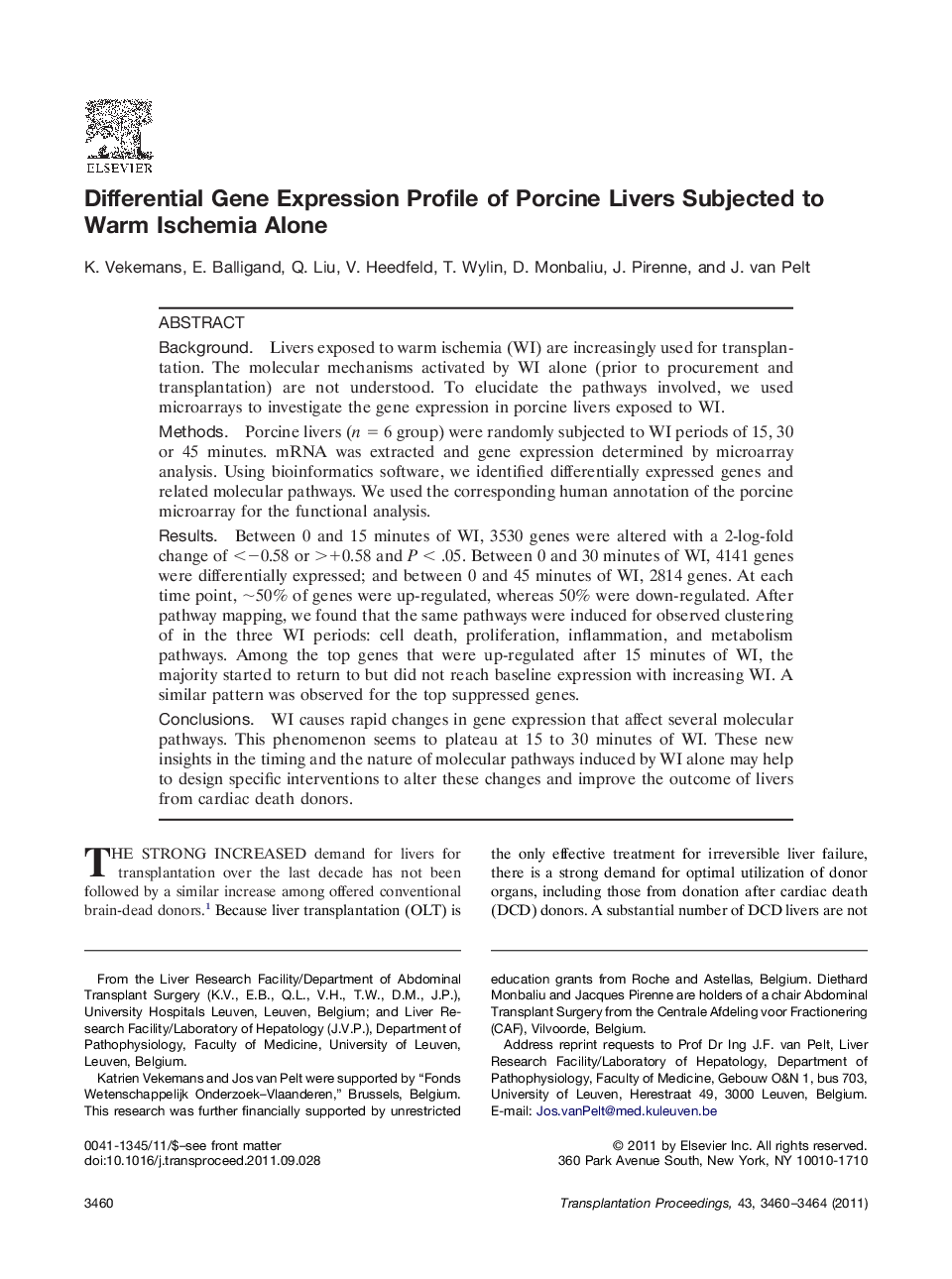| Article ID | Journal | Published Year | Pages | File Type |
|---|---|---|---|---|
| 4258621 | Transplantation Proceedings | 2011 | 5 Pages |
BackgroundLivers exposed to warm ischemia (WI) are increasingly used for transplantation. The molecular mechanisms activated by WI alone (prior to procurement and transplantation) are not understood. To elucidate the pathways involved, we used microarrays to investigate the gene expression in porcine livers exposed to WI.MethodsPorcine livers (n = 6 group) were randomly subjected to WI periods of 15, 30 or 45 minutes. mRNA was extracted and gene expression determined by microarray analysis. Using bioinformatics software, we identified differentially expressed genes and related molecular pathways. We used the corresponding human annotation of the porcine microarray for the functional analysis.ResultsBetween 0 and 15 minutes of WI, 3530 genes were altered with a 2-log-fold change of <−0.58 or >+0.58 and P < .05. Between 0 and 30 minutes of WI, 4141 genes were differentially expressed; and between 0 and 45 minutes of WI, 2814 genes. At each time point, ∼50% of genes were up-regulated, whereas 50% were down-regulated. After pathway mapping, we found that the same pathways were induced for observed clustering of in the three WI periods: cell death, proliferation, inflammation, and metabolism pathways. Among the top genes that were up-regulated after 15 minutes of WI, the majority started to return to but did not reach baseline expression with increasing WI. A similar pattern was observed for the top suppressed genes.ConclusionsWI causes rapid changes in gene expression that affect several molecular pathways. This phenomenon seems to plateau at 15 to 30 minutes of WI. These new insights in the timing and the nature of molecular pathways induced by WI alone may help to design specific interventions to alter these changes and improve the outcome of livers from cardiac death donors.
